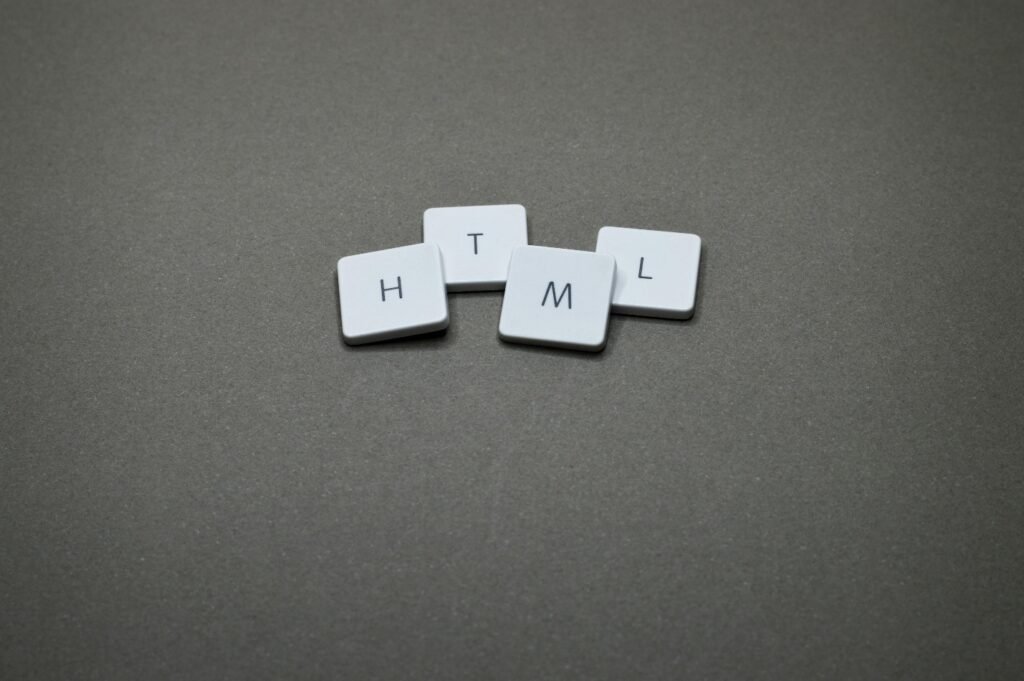Hypertext Markup Language (HTML) is the backbone of the web pages we see on the internet. It is the most fundamental web technology for creating and structuring content on the Internet. Whether you are building a personal blog, an e-commerce website, or a sophisticated web application, HTML is the first step in creating a web presence. Understanding HTML is essential for anyone looking to get into web development, and it’s a skill that opens doors to countless opportunities in the digital world.

1. What is HTML Language?
1.1 Definition and Purpose
The basic language used to organize and create content for web pages and web applications is called HTML, or Hyper Text Markup Language. It is not a programming language but a markup language that uses a system of tags and attributes to structure text, images, and other multimedia content on the web.
HTML’s primary purpose is to define the structure and layout of a web document using various elements, such as headings, paragraphs, links, images, and more. HTML tells the web browser how to display content but does not dictate the appearance or design, typically handled by Cascading Style Sheets (CSS).
1.2 A Brief History of HTML
Tim Berners-Lee developed HTML in 1991 as a straightforward and easily navigable language for information sharing across many networks. The early versions of HTML were essential and had limited capabilities. Over the years, HTML has evolved significantly, introducing new elements and features to enhance web development.
The language had substantial advancements with the release of HTML5, the most recent version, in 2014. HTML5 introduced new elements, attributes, and behaviors that support multimedia, graphics, and complex web applications. It also improved web semantics and accessibility, making web pages more understandable to search engines and assistive technologies.
1.3 Why Learn HTML?
Learning HTML is essential for anyone interested in web development, digital marketing, content creation, or maintaining a personal website. Here are several key reasons to consider learning HTML:
1. The Foundation of Web Development: The foundation of most web development is the HTML language. Understanding HTML is crucial for anyone looking to work in web design, front-end web development, or web application development.
2. Accessibility and SEO: A solid grasp of HTML helps in structuring content in a way that is accessible to users and search engines, enhancing both accessibility and search engine optimization (SEO).
3. Multi-Platform Compatibility: HTML is a versatile language that ensures content can be displayed across different browsers, devices, and screen sizes, making it essential for creating responsive and mobile-friendly websites.
4. Easy to Learn: HTML is considered one of the easiest programming languages to learn, making it an excellent starting point for beginners in programming and web development.
5. Career Opportunities: Proficient HTML opens up numerous career opportunities in the tech industry, including web development, digital marketing, content management, and more.
6. Content Control: Understanding HTML gives you more control over how your content appears and is structured, allowing you to create more engaging and visually appealing web pages.
7. Increases Creativity: Learning HTML serves as a springboard to more advanced web technologies, allowing people to express their creativity through web design and interactive web applications.
8. Foundation for Learning Other Languages: Understanding HTML lays a solid foundation for learning other web technologies such as CSS and JavaScript, utilized to generate dynamic and interactive web experiences.

2. Getting Started with HTML
2.1 Setting Up Your Development Environment
You only need a basic text editor and a web browser to start writing HTML. Here’s how to set up your development environment for HTML:
- Text Editor: You can write HTML code using plain text editors like Notepad (Windows), Text edit (Mac), or more advanced editors like Visual Studio Code, Sublime Text, or Atom. These editors offer syntax highlighting, auto-completion, and live previews, making writing and debugging HTML easier.
- Web Browser: A web browser, such as Google Chrome, Mozilla Firefox, Microsoft Edge, or Safari, is used to view and test your HTML files. Browsers interpret HTML code and render it visually for users to interact with.
2.2 The Basic Structure of an HTML Document
An HTML document is a plain text file that contains a combination of elements that define the structure and content of a web page. Let’s create a basic HTML document to understand its structure:
html
<!DOCTYPE html>
<html lang=”en”>
<head>
<meta charset=”UTF-8″>
<meta http-equiv=”X-UA-Compatible” content=”IE=edge”>
<meta name=”viewport” content=”width=device-width, initial-scale=1.0″>
<title>My First HTML Page</title>
</head>
<body>
<h1>Hello, World!</h1>
<p>This is my first HTML page.</p>
</body>
</html>
Let’s break down the components of this HTML document:
- <!DOCTYPE html>: The HTML version and document type are specified in this declaration. It instructs the browser that the document follows the HTML5 standard.
- <html lang=”en”>: The <html> element is an HTML page’s root element.
- The `lang` attribute indicates the language in which the document is written.
- <head>: The <head> element has connections to stylesheets and scripts and also meta-data about the document, including the title and character set.
- <meta charset=”UTF-8″>: The character encoding for the HTML document is specified by this meta tag.
- UTF-8 is a standard character encoding that supports most characters and symbols.
- <title>: The <title> element sets the web page’s title, displayed in the browser tab.
- <body>: The `<body>` element contains the primary content of the web page, including text, images, links, and other components.

3. Core HTML Elements
3.1 Text Elements
HTML provides various elements for structuring text content:
- Headings: HTML has six levels of headings, <h1> to <h6>, with <h1> being the most important and <h6> the least. Headings help define the structure and hierarchy of content on a web page.
html
<h1>Main Heading</h1>
<h2>Subheading</h2>
<h3>Section Heading</h3>
- Paragraphs: The <p> element is utilized to define paragraphs.
html
<p>This is a paragraph of text.</p>
- Bold and Italics: <strong> and <b> are used for bolding the text, while <em> and <i> are used for italicizing the text.
html
<strong>Bold text</strong>
<em>Italic text</em>
- Line Breaks and Horizontal Rules: <br> creates a line break, and <hr> inserts a horizontal rule or divider.
html
<p>Line one.<br>Line two.</p>
<hr>
3.2 Links and Anchors
Links allow users to move between different web pages. These linkages are created in HTML using the (anchor) elements:
html
<a href=”https://www.example.com”>Visit Example</a>
- The `href` attribute defines the destination URL for the hyperlink.
- You can create internal links that navigate to different sections within the same page by using an id attribute:
html
<a href=”#section1″>Go to Section 1</a>
<h2 id=”section1″>Section 1</h2>
3.3 Images
Images are a vital part of web content. HTML uses the <img> element to embed images:
html
<img src=”image.jpg” alt=”A descriptive text for the image”/>
- The `src` attribute describes the path directly to the image file.
- The alt element, which is crucial for SEO and accessibility, offers an alternate text for the image.
3.4 Lists
HTML accommodates both ordered (numbered) lists and unordered (bulleted) lists:
- Unordered Lists: Use the <ul> element for a bulleted list, with each item inside <li> tags.
html
<ul>
<li>Item 1</li>
<li>Item 2</li>
<li>Item 3</li>
</ul>
- Ordered Lists: Use the <ol> element for a numbered list.
html
<ol>
<li>First item</li>
<li>Second item</li>
<li>Third item</li>
</ol>
3.5 Tables
Tables organize data into rows and columns using the <table>, <tr>, <th>, and <td> elements:
html
<table>
<tr>
<th>Header 1</th>
<th>Header 2</th>
</tr>
<tr>
<td>Data 1</td>
<td>Data 2</td>
</tr>
</table>
- <table>: Defines the table.
- <tr>: Defines a table row.
- <th>: Defines a header cell.
- <td>: Defines a data cell.
3.6 Forms
Forms are essential for collecting user input. HTML forms consist of various input elements, such as text fields, checkboxes, radio buttons, and submit buttons:
html
<form action=”/submit-form” method=”post”>
<label for=”username”>Username:</label>
<input type=”text” id=”username” name=”username” required>
<label for=”email”>Email:</label>
<input type=”email” id=”email” name=”email” required>
